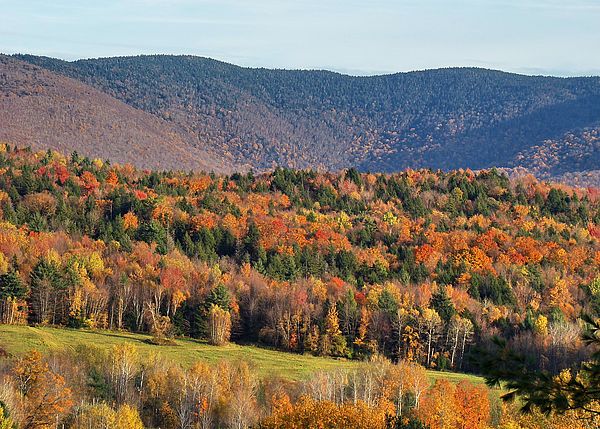Greetings friends and welcome to the Fall 2018 edition of CONNECTIONS, the quarterly newsletter from Cold Hollow to Canada. With this issue we shift our focus from the working forests which have been and will continue to be, at the core of our work, to step back and look at the role of wild or ‘self-willed’ lands within our shared landscape. The recent announcement of The Nature Conservancy’s Burnt Mountain project (described in more detail herein) reminds us that these lands have a critical role in maintaining the ecologically intact, resilient, and functional landscapes where we live, work, and play, and which we share with the host of plant and animal species which make up our community, as defined so eloquently in Aldo Leopold’s Land Ethic. Check out Nancy Patch’s piece Why Wilderness to learn more about where these lands fit in Vermont’s conservation vision.
With this issue, we also turn our focus to the important, though often neglected, the topic of succession planning. On July 14th members from all three of our Woodlots groups gathered by a small pond in Montgomery to enjoy lunch together and start a conversation about what comes next. Reflecting inward on our own limited time on this earth we also realize that the landscapes we steward today will persist long after we’re gone, and it’s crucial that we put the pieces in place to ensure that our own wishes are met concerning what happens to this resource.
Guided by Emma Sass from the University of Vermont, the group explored a menu of options when it comes to planning for the future, ranging from having a will in place to setting up entities such as Trusts, to permanent conservation easements. The discussion focused for a bit on the legal and tax implications of the various trust options, and then took a deep dive into conservation easements. The entire afternoon was enriched by individuals sharing their personal experiences on both fronts, notable because of the power of peer-to-peer exchange, and the evident foundation of trust within the group that underpinned the discussion. Those involved not only felt able/safe to share what are essentially incredibly personal details about their lives but also saw value in the information that was exchanged. Discussion wrapped up with a collective desire that we schedule a future meeting to do a deeper dive with a more narrowly focused discussion of conservation easements. The rain held off, and the water lilies were beautiful, as we turned our gazes forward to the future. Check out Emma Sass’s article in this issue to learn more about succession planning.
Lastly, and more exciting with this issue of CONNECTIONS we’re also thrilled to announce the 2018 Annual Gathering of Cold Hollow to Canada, which will be held Thursday, October 4th in Montgomery. This year we’ll be joined by Tom Butler, the Foundation for Deep Ecology’s Chief Philosophy Officer and vice president for Conservation Advocacy. Tom is a longtime conservation activist and writer who has concentrated primarily on wilderness and biodiversity.The former longtime editor of Wild Earth journal, his books include Wildlands Philanthropy, Plundering Appalachia, Keeping the Wild: Against the Domestication of Earth, and ENERGY: Overdevelopment and the Delusion of Endless Growth. Tom was a founding board member, former president, and is a current member of the board of directors of Northeast Wilderness Trust. The Foundation for Deep Ecology and Thompkins Conservation were founded by Kris and Doug Thompkins who also created the North Face and Patagonia. The Thompkins have worked for two decades, creating national parks, recovering imperiled wildlife, implementing ecological agriculture, promoting healthy local communities, and supporting leading-edge activism. We hope you can join us for what will be a wonderful evening of fellowship and a shared vision for the future.
Thanks, and enjoy.
